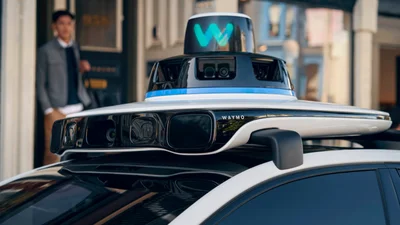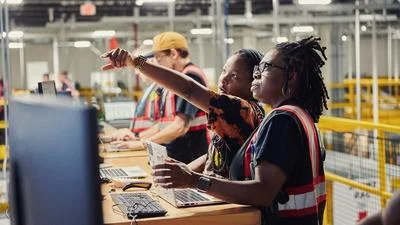The Congressional Record is a unique source of public documentation. It started in 1873, documenting nearly all the major and minor policies being discussed and debated.
“THE NEW MILLENNIUM CLASSROOMS ACT” mentioning the U.S. Dept. of Commerce was published in the Senate section on pages S10071 on Aug. 3, 1999.
The publication is reproduced in full below:
THE NEW MILLENNIUM CLASSROOMS ACT
Mr. ABRAHAM. Mr. President, I rise today to discuss the New Millennium Classrooms Act amendment to the Taxpayer Relief Act of 1999. I am pleased that this amendment was cleared on both sides of the aisle and has been accepted by the full United States Senate. The passage of the Abraham-Wyden New Millennium Classrooms Act amendment by unanimous consent, demonstrates beyond shadow of a doubt that the United States Senate is firmly committed to bringing quality high technology to schools and seniors. This provision will go a long way toward ensuring our nation's technological and economic leadership in the New Economy.
First, I would like to take this opportunity to thank the Chairman for his leadership and support during this process, without which we might not have had this opportunity to pass such important legislation. In addition, I would like to express my thanks to Senator Wyden who has worked closely with me to develop this strong legislation which would bridge the digital divide between technological haves and have-nots, ensuring that all our nation's students, and seniors, enjoy access to quality technology and the Internet.
When I first introduced this legislation, I was joined by Senators Wyden, Hatch, Kerrey, Coverdell, Daschle, Jeffords, Lieberman, Allard, Gorton, Burns, and McConnell. Like me, they believe it will encourage companies and individuals to donate more computers to schools, helping these institutions train kids for jobs in the fast-growing high technology sector of our economy. Since then we have been joined by 14 additional colleagues from both sides of the aisle.
Mr. President, our kids must be prepared for the jobs of the 21st century, which requires training and experience with computers and the Internet. Unfortunately, not enough schools have the equipment they need to teach the essential skills our kids and our nation need to keep our economic future bright.
Education Secretary Riley recently testified before the Joint Economic Committee, saying that he expects us to see 70 percent growth in computer and technology-related jobs in the next six years alone. In less then six months, 60 percent of all jobs will require computers.
However, Mr. President, our classrooms have too few computers. And the computers they do have are so old and outdated that they cannot run the most basic software or even access the Internet. One of the more common computers in our schools today is the Apple IIc, a model so archaic it is now on display at the Smithsonian.
Mr. President, the problem is even worse for those already disadvantaged. A recent Commerce Department report, Falling through the Net: Defining the Digital Divide'' shows a growing divide between technological haves and have-nots. Among the study's findings:
The gap between white and black/Hispanic households with incomes between $15-$35,000 per year has increased, from 8% five years ago to 13% today.
Households with annual incomes of at least $75,000 are more than 20 times as likely to have Internet access than households at the lowest income levels.
All this points up the need to encourage access to the Internet from computers outside the home. Access translates into usage, then experience and knowledge. Bringing high technology to schools, especially schools in economically disadvantaged areas, and senior centers will provide students and seniors the opportunity to succeed in the next millennium that they might not have had otherwise.
The Detwiler Foundation, an organization with unparalleled status as a facilitator of computer donations to K-12 schools nationwide, estimates that if just 10 percent of the computers taken out of service each year were donated to schools, the national ratio of students to computers would be brought down to five to one, or even less.
Mr. President, this amendment, through tax incentives, would increase the amount of computer technology donated to schools.
Our amendment would do the following:
First, allow a tax credit equal to 30 percent of the fair market value of the donated computer equipment, including computers, peripheral equipment, software and fiber optic cable related to computer use, generally, and a 50 percent credit for donations made within designated empowerment zones, enterprise communities, and Indian reservations. Increasing the amount of the tax credits for donations made to schools and senior centers in economically-distressed areas will increase the availability of computers to the children and seniors who need them most.
Second, increase the age limit to include equipment three years old or less. Many companies update their equipment every 3 to 5 years. Yet three year old computers equipped with Pentium-based or equivalent chips have the processing power, memory, and graphics capabilities to provide sufficient Internet and multi-media access and run any necessary software.
Third, expand the pool of eligible donors. By expanding the number of donors eligible for the tax credit we can increase the number of computers available as well.
In addition, this amendment would require that donated computers include an installed operating system. Sophisticated hardware can be easily damaged during transport or even when the donating company's private files and documents are removed. Without the operating system, it could be weeks before the school is aware of any problems concerning the donation. Further, inclusion of an operating system will ensure that students can begin using the machines as soon as they are plugged in, without further burdening school budgets with the added purchasing costs of an operating system and license.
This amendment has been endorsed by: the National Association of Secondary School Principals, Microsoft, The Information Technology Industry Council, The National Association of Manufacturers, The Technology Training Tax Credit Coalition, 11 senior executives of leading technology companies and venture capital firms, The National Association of State Universities and Land Grant Colleges, TechNet, and the United States Chamber of Commerce.
All of these organizations agree that this amendment will provide powerful tax incentives for businesses to donate high-tech equipment to our classrooms.
Mr. President, without duly increasing federal expenditures or creating yet another federal program or department this amendment will give all our children an equal chance to succeed in the new millennium.
I yield the floor.
____________________








